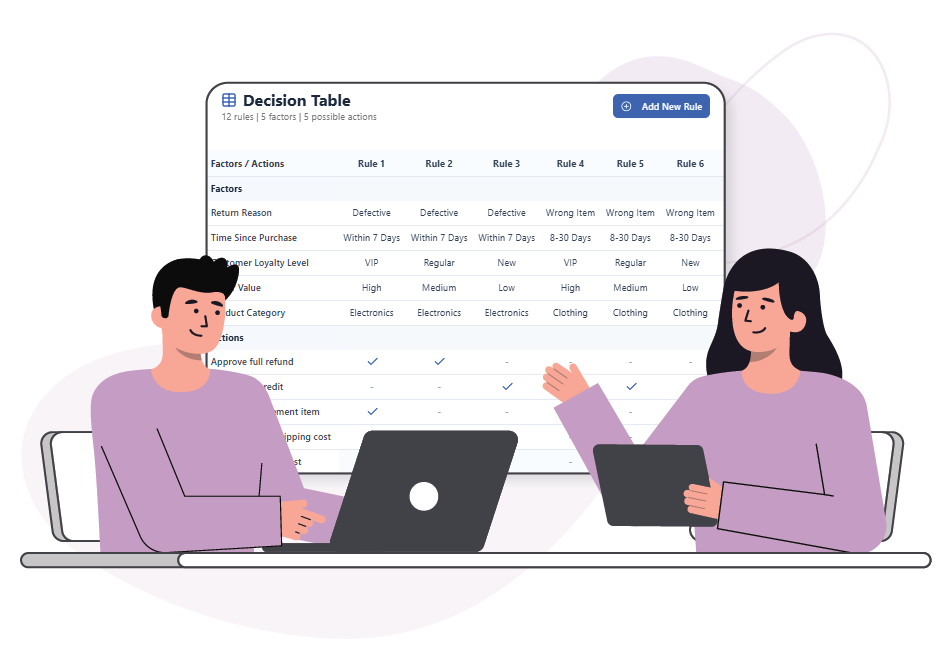Now Reading: Decision Table Case Study: Automating an E-commerce Refund Policy
-
01
Decision Table Case Study: Automating an E-commerce Refund Policy
Decision Table Case Study: Automating an E-commerce Refund Policy
“QuickBuy,” a fast-growing online retailer, was struggling with its refund process. Their policy was based on three main conditions: whether the item was “new or used”, the “reason for return” (e.g., damaged, wrong size), and the “days since purchase”. Because of these different factors, customer service agents had to manually check each return request against a long, written policy.
This process was slow and often led to mistakes. An agent might miss a key detail, leading to the wrong refund being given, or they might take too long to process a request. This created frustration for both the customer and the agent, and it cost the company money due to inconsistencies. QuickBuy needed a way to make their refund process consistent, fast, and error-free.

A Single, Clear Decision Table
QuickBuy’s management team decided to use our AI decision table generator to create a single source of truth for their refund policy. They provided the AI with the three conditions and the different possible actions: “Full Refund”, “Partial Refund (Store Credit)”, or “Deny Refund”.
Actions
The AI instantly created a complete table. Each column represented a unique scenario. For example, one rule clearly stated: if the item is “used,” the reason is “wrong size,” and it has been “more than 30 days,” the action is to “Deny Refund.” Another rule was: if the item is “new,” the reason is “damaged,” and it has been “less than 30 days,” the action is to give a “Full Refund.”
Impact: Faster Processing and Happier Customers

After implementing the decision table, QuickBuy’s customer service team saw immediate improvements.
- Speed: Agents no longer had to read through a long document. They could simply look at the table to find the right action in seconds. This cut down the time it took to handle a refund request by more than 50%.
- Consistency: Every agent, from new hires to senior staff, was now following the exact same rules. This eliminated mistakes and ensured that every customer was treated fairly and consistently.
- Reduced Errors: The AI-generated table made sure no rule was left out. This prevented the company from accidentally giving an incorrect refund or denying a valid one.
By transforming their complex, written policy into a clear, single-page decision table, QuickBuy was able to solve a major problem, saving time and money while making their customers happier.

